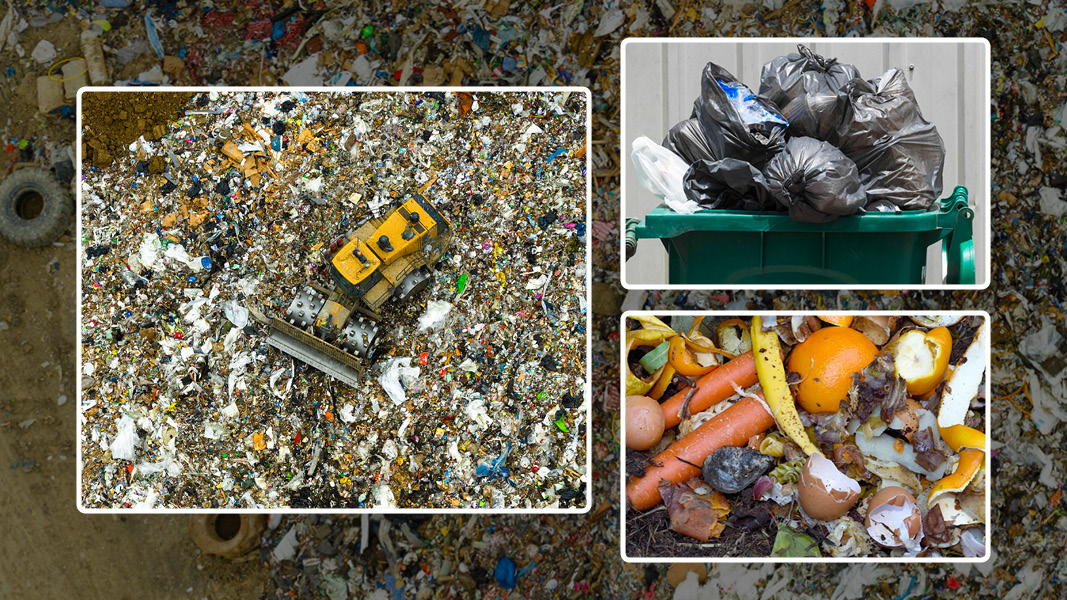Top: Photos courtesy Industrious Labs
 Landfills are a “sleeping giant of the climate crisis,” and the largest industrial source of the potent greenhouse gas methane in 38 states, according to Industrious Labs, a network of strategists and others who create campaigns to “put climate solutions to work.” New analysis from the organization reveals that the U.S. Environmental Protection Agency (EPA) can cut methane emissions from landfills 56% cumulatively by 2050 through “common-sense” updates to Clean Air Act regulations. “As the agency works to update its landfill methane emissions rules by 2025 for landfills, now is the time to embrace science-backed, proven, and straightforward best practices,” explains Katherine Blauvelt, Circular Economy Director at Industrious Labs. “The EPA is at the starting line to fix flawed rules that are enabling unchecked harmful methane emissions. Our new analysis, Turning Down the Heat: How the U.S. EPA can fight climate change by cutting landfill emissions, reveals that practical improvements to EPA regulations can reduce cumulative methane emissions by nearly 3 gigatons of carbon dioxide equivalent on a 100-year global warming potential (GWP), and more than 8 gigatons of carbon dioxide equivalent on a 20-year GWP. Methane is 80 times more potent than carbon dioxide in its first 20 years in the atmosphere. We’re asking the EPA to move from a flip phone to a smartphone — it’s time for modern rules that match today’s technology and climate challenges.”
Landfills are a “sleeping giant of the climate crisis,” and the largest industrial source of the potent greenhouse gas methane in 38 states, according to Industrious Labs, a network of strategists and others who create campaigns to “put climate solutions to work.” New analysis from the organization reveals that the U.S. Environmental Protection Agency (EPA) can cut methane emissions from landfills 56% cumulatively by 2050 through “common-sense” updates to Clean Air Act regulations. “As the agency works to update its landfill methane emissions rules by 2025 for landfills, now is the time to embrace science-backed, proven, and straightforward best practices,” explains Katherine Blauvelt, Circular Economy Director at Industrious Labs. “The EPA is at the starting line to fix flawed rules that are enabling unchecked harmful methane emissions. Our new analysis, Turning Down the Heat: How the U.S. EPA can fight climate change by cutting landfill emissions, reveals that practical improvements to EPA regulations can reduce cumulative methane emissions by nearly 3 gigatons of carbon dioxide equivalent on a 100-year global warming potential (GWP), and more than 8 gigatons of carbon dioxide equivalent on a 20-year GWP. Methane is 80 times more potent than carbon dioxide in its first 20 years in the atmosphere. We’re asking the EPA to move from a flip phone to a smartphone — it’s time for modern rules that match today’s technology and climate challenges.”
Current EPA regulations around how landfill gas is collected, controlled, and monitored allow for many landfill operators to avoid or delay installation of gas collection and control systems, and do not require proper operation of the systems. Likewise, EPA inspectors have found methane leaking from landfills due to poor cover practices that allow erosion, inadequate vegetation, and exposed waste to proliferate. “By taking a number of simple, common-sense steps to raise the bar for landfills, EPA can make a significant dent in U.S. climate pollution,” adds Blauvelt. “In addition to the improvements that were modeled, even more methane leaks could be found and remedied if the EPA required more effective, comprehensive monitoring for methane leaks using up-to-date technologies that make finding and fixing methane leaks exponentially easier and limit error.”
The model results reveal that embracing two categories of solutions — improved landfill cover requirements and gas collection and control systems — would yield a total of 104 million metric tons of methane emission reduction (56% cumulatively through 2050). The report notes there is a broad suite of available technology and best practices to lower methane emissions, including implementation of zero organic waste landfilled by 2050.













